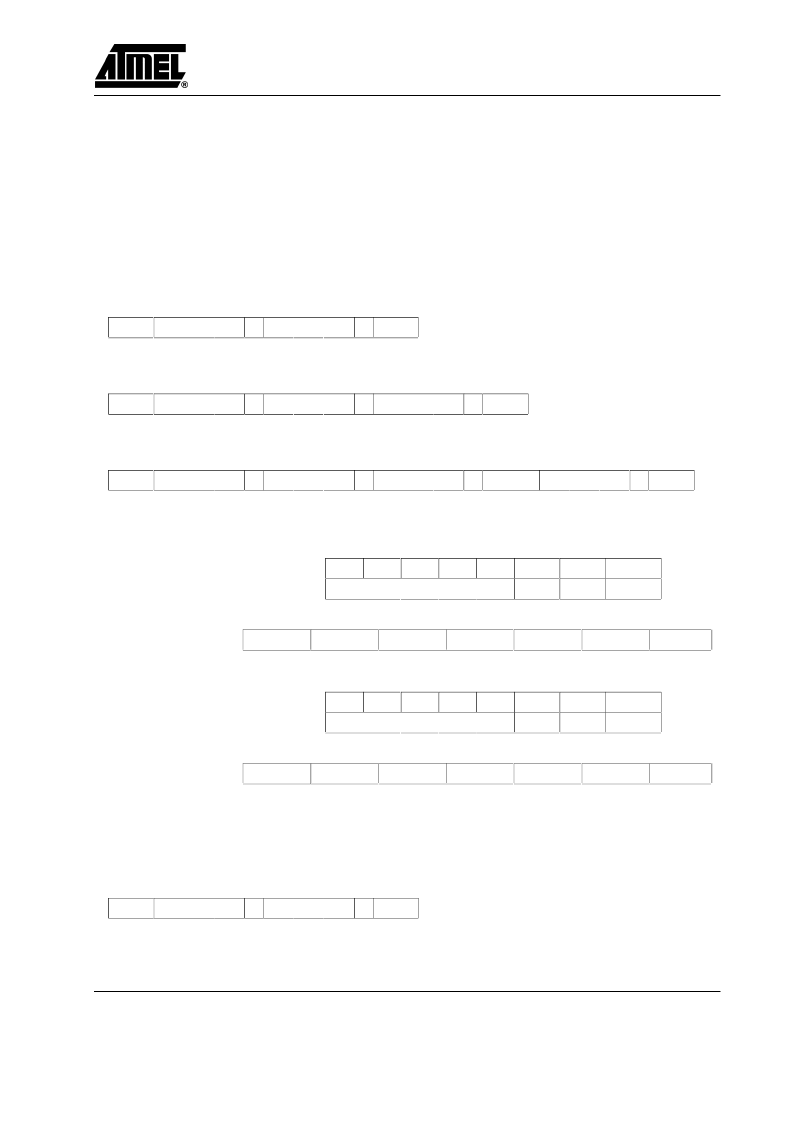- 您現(xiàn)在的位置:買賣IC網(wǎng) > PDF目錄373527 > T48C893-TK (ATMEL CORP) The multiple times programmable (MTP) version for the MARC4 ROM types PDF資料下載
參數(shù)資料
| 型號: | T48C893-TK |
| 廠商: | ATMEL CORP |
| 元件分類: | 微控制器/微處理器 |
| 英文描述: | The multiple times programmable (MTP) version for the MARC4 ROM types |
| 中文描述: | 4-BIT, FLASH, 4 MHz, MICROCONTROLLER, PDSO20 |
| 封裝: | SSO-20 |
| 文件頁數(shù): | 75/82頁 |
| 文件大小: | 638K |
| 代理商: | T48C893-TK |
第1頁第2頁第3頁第4頁第5頁第6頁第7頁第8頁第9頁第10頁第11頁第12頁第13頁第14頁第15頁第16頁第17頁第18頁第19頁第20頁第21頁第22頁第23頁第24頁第25頁第26頁第27頁第28頁第29頁第30頁第31頁第32頁第33頁第34頁第35頁第36頁第37頁第38頁第39頁第40頁第41頁第42頁第43頁第44頁第45頁第46頁第47頁第48頁第49頁第50頁第51頁第52頁第53頁第54頁第55頁第56頁第57頁第58頁第59頁第60頁第61頁第62頁第63頁第64頁第65頁第66頁第67頁第68頁第69頁第70頁第71頁第72頁第73頁第74頁當前第75頁第76頁第77頁第78頁第79頁第80頁第81頁第82頁

T48C893
Rev. A4, 22-Jan-02
75 (82)
Read Operations
The EEPROM allows byte-, word- and current address
read operations. The read operations are initiated in the
same way as write operations. Every read access is initi-
ated by sending the START condition followed by the
control byte which contains the address and the read
mode. After the device receives a read command it re-
turns an acknowledge, loads the addressed word into the
read\write buffer and sends the selected data byte to the
master. The master has to acknowledge the received byte
Read One Data Byte
if it wants to proceed the read operation. If two bytes are
read out from the buffer the device increments respec-
tively decrements the word address automatically and
loads the buffer with the next word. The read mode bits
determines if the low or high byte is read first from the
buffer and if the word address is incremented or decre-
mented for the next read access. If the memory address
limit is reached, the data word address will
”
roll over
”
and
the sequential read will continue. The master can termi-
nate the read operation after every byte by not responding
with an acknowledge (N) and by issuing a stop condition.
áááááááááááááááááááá
áááááááááááááááááááá
áá
áá
áááá
ááááááááááááááááááááááááá
ááááááááááááááááááááááááá
áááááááááááááááááá
áá
áááááááááááá
áááá
Read n Data Bytes
ááááááááááááááááááááááááááááááá
ááááááááááááááá
ááááááááááá
Read Control Bytes
Start
Control byte
A
Data byte 1
áááá
áááááááááááááááááá
A
ááááááááááááááááá
Data byte 2
A
–
–
–
–
Data byte n
N
Stop
áá
áá
áááááááááááááááááááááááááááááááá
áááááááááááááááááááááááááááááááá
áááááááááááááááááááááááááá
áááááááááááááááááááááááááááááááá
áááááááááááááááááááááá
áááááááááááááááááááááááááá
áááááááááááááááááááááááááááááááá
ááááááááááááááááááááááááá
ááááááááááááááááááááááááá
áááááááááááááááááááááá
A
–
> acknowledge, N
–
> no acknowledge; HB: high byte; LB: low byte, R: row address
Initialization the Serial Interface to the EEPROM
Row address
LB(R+1)
HB(R+1)
ááááááááááááá
ááááááááááá
ááááááááááá
ááááááááááá
ááááááááááá
ááááááááááá
LB(R+n)
1
A3
0
1
áááááááááááá
áááá
ááááá
áá
áááááááááááááááááááááááááááááááá
áááááááááááááááááááááááááááááááá
áááá
LSB
To prevent unexpected behaviour of the EEPROM and its interface it is good practice to use an initialization sequence
after any reset of the circuit. This is performed by writing:
áááááááááááááááááááá
ááááááá
perform this sequence twice.
ááááá
ááááá
ááááááá
Stop
áááá
áááá
áááááááááááááááááááá
相關(guān)PDF資料 |
PDF描述 |
|---|---|
| T48C893-TKQ | The multiple times programmable (MTP) version for the MARC4 ROM types |
| T500 | DIL 14 PIN SINGLE OUTPUT |
| T500 | Phase Control SCR (40-80 Amperes (63-125 RMS) 1600 Volts) |
| T5015 | TELECOMMUNICATIONS PRODUCTS |
| T5002 | TELECOMMUNICATIONS PRODUCTS |
相關(guān)代理商/技術(shù)參數(shù) |
參數(shù)描述 |
|---|---|
| T48C893-TKQ | 制造商:ATMEL 制造商全稱:ATMEL Corporation 功能描述:The multiple times programmable (MTP) version for the MARC4 ROM types |
| T48D | 制造商:WELWYN 制造商全稱:Welwyn Components Limited 功能描述:High Voltage Precision Thick Film Resistors |
| T48DH-100MFI | 制造商:TT Electronics / Welwyn 功能描述:RESISTOR 100 MEG OHM 1% |
| T48DH-150MFI | 制造商:TT Electronics / Welwyn 功能描述:RESISTOR 150 MEG OHM 1% |
| T48DH-220MFI | 制造商:TT Electronics / Welwyn 功能描述:RESISTOR 220 MEG OHM 1% |
發(fā)布緊急采購,3分鐘左右您將得到回復。